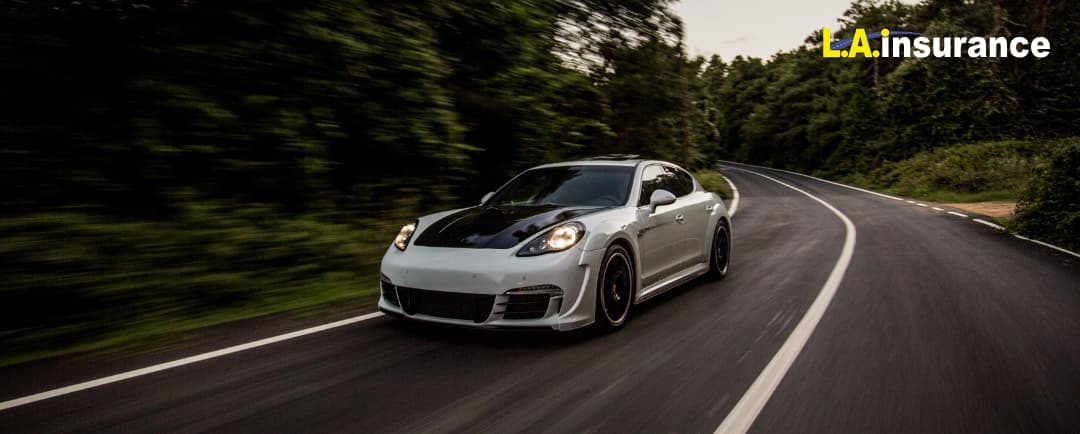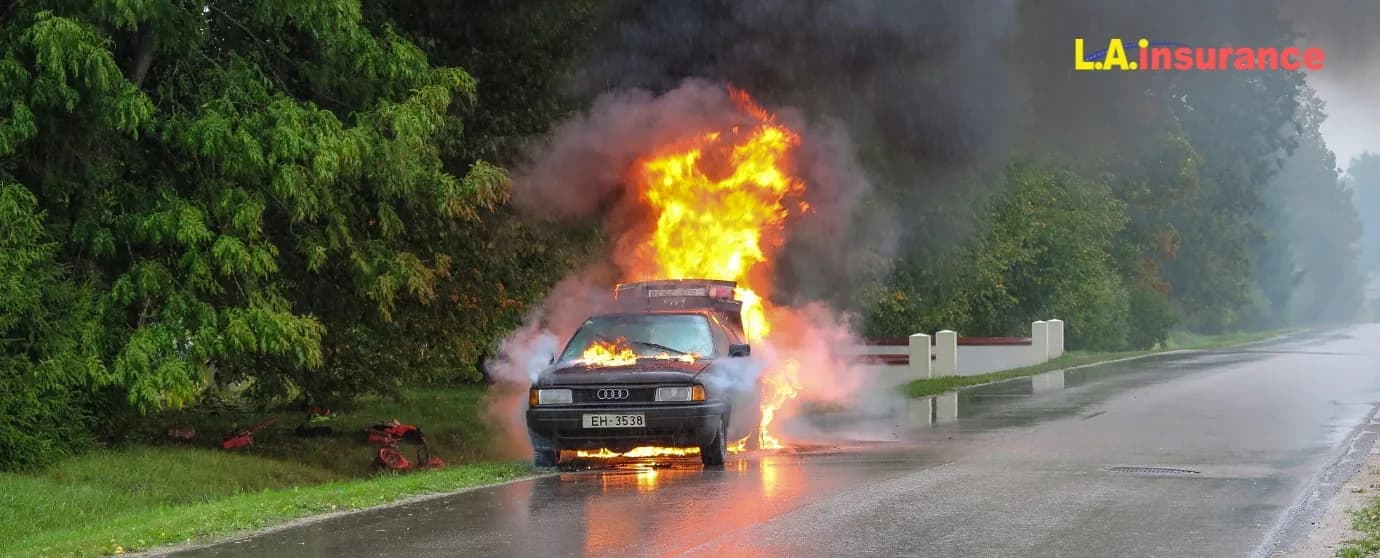
Publish Date: 22-10-2024
Auto Insurance
Last Updated: 05-11-2024
19 Safety Tips for Driving at Night
Most car accidents usually happen during the daytime. However, driving after dark is dangerous as well! Statistics show there is an increased chance of fatal accidents at night. Darkness reduces visibility, which makes it harder for drivers to see on the road. Besides, fatigue is common, and glare from headlights can be distracting. On top of that, wildlife and drunk drivers are also more active at night, increasing the chance of accidents. Because of these risks, you should know how to stay safe when driving after dark. You can follow some simple safety tips for driving at night to protect yourself and others on the road. Exercising these nighttime driving safety tips will surely improve your night driving habits, stay alert, and reduce hazards. Let’s start with some reasons why driving at night is risky, and then we’ll share some key tips that will make all the difference in staying safe at night.
Why Is Driving at Night Risky?
Driving at night is more dangerous due to several factors. National Highway Traffic Safety Administration (NHTSA) shows that around 49% of fatal car accidents happen at night, despite having around 60% less traffic on the roads. According to the National Safety Council (NSC), driving at night increases the likelihood of a fatal accident by approximately three times compared to driving during the day. Furthermore, teen drivers (ages 16-19) are at more risk compared to adult drivers (ages 30-59 years old), particularly when they are driving at night or on weekends. U.S. Centers for Disease Control and Prevention (CDC) states that teens are three times more likely to crash in a car accident at night than adult drivers per mile driven.
When it comes to excavating reasons for these car crashes, reduced visibility is a major issue, as darkness limits how far drivers can see. This makes it harder to spot obstacles, other vehicles, or road signs. Fatigue is another major risk, as the body’s natural sleep cycle can cause slower reaction times. Glare from oncoming headlights can temporarily blind drivers and fuel the chances of accidents. Impaired or drunk drivers are also more common at night, which leads to dangerous situations on the road. Also, wildlife (e.g., deer) is more active after dark, raising the risk of sudden collisions. These factors combined make nighttime driving a serious challenge that requires caution and awareness.
Risks Associated with Driving at Night
Here are some risks associated with driving during nighttime:
- Reduced Visibility: Darkness makes it harder to see the road, signs, and other cars clearly, which makes it difficult to react in time.
- Driver Fatigue: The body’s natural sleep cycle can cause drowsiness, slower reaction times, and impaired judgments during nighttime hours.
- Glare from Headlights: Bright headlights from other vehicles can cause temporary blindness or disorientation and you might not be able to stay focused.
- Impaired or Drunk Drivers: More drivers are likely to be impaired by alcohol or drugs at night, increasing the risks of accidents.
- Wildlife Crossings: Animals are more active at night, and sudden encounters with them can cause unexpected collisions.
- Unfamiliar or Poorly Lit Roads: Night driving on roads that are not well-lit or are unfamiliar can make driving difficult and increase accident risks.
19 Best Safety Tips for Driving at Night
If you’re an inexperienced driver, we would recommend practicing the safety tips while driving at night. These nighttime safety tips can make your journey safer and less stressful. As we all know darkness reduces visibility, increases the risk of encountering impaired drivers, and makes it harder to spot hazards like animals, you can significantly lower the risks associated with nighttime driving. In this section, we’ll discuss the 19 best safety tips for driving at night. These tips focus on enhancing visibility, reducing distractions, and staying alert on the road.
1. Driving Sober
When you drive at night, don’t drink and drive! Because alcohol-impaired driving remains a significant cause of traffic fatalities. In 2022 alone, 13,524 deaths resulted from crashes involving alcohol-impaired drivers in the United States. This represents nearly 32% of all traffic-related deaths that year. Furthermore, about one-third of all crash fatalities in the country involve drunk drivers. Statistics also show that drivers with a blood alcohol concentration (BAC) of 0.08% or higher are four times more likely to be involved in a crash.
To combat this issue, states enforce strict DUI laws and penalties. Besides, measures include mandatory license suspension, ignition interlock devices for offenders, and sobriety checkpoints. So next time if you’re drunk and need to drive home, arrange for alternative transportation, like a designated driver. Rideshare, or taxi! Otherwise, just stay sober before you drive your car. Both ways you can save yourself and others on the road.
Related Article: Does Auto Insurance Cover Drunk Driving Accidents?
2. Drive Defensively
Defensive driving is highly crucial, particularly at night when you’re unable to see properly. You may face additional hazards like impaired drivers and wildlife crossings during nighttime. Also, there are four times more fatal crashes at night when someone is drunk than during the day (34 versus 9 Percent). So, it’s the safest option to choose to drive defensively. Defensive driving means staying alert, anticipating others’ actions, and maintaining a safe distance. Slow down the speed to allow for extra reaction time, and always be cautious at intersections and curves. Also, scan the road ahead for potential dangers like oncoming headlights or sudden lane changes. Do not forget to use aggressive maneuvers and always use turn signals. By doing so, you can increase your ability to respond to unexpected events.
3. Ensure Proper Headlight Alignment and Use
Proper headlight alignment is necessary for clear visibility at night. Misaligned headlights can reduce your field of vision and blind other drivers. So, you should check your headlights regularly to make sure they are aimed at correctly and provide the utmost illumination.
Tips for proper headlight use include:
- Switch to low beams when your car is approaching to prevent glare
- Use high beams when driving on unlit roads but turn them off for oncoming traffic
- Clean headlights and lenses often to remove debris and dirt
- Replace faulty or dim headlights
4. Reduce Speed and Increase Following Distance
Reducing speed and increasing following distance at night are key strategies for staying safe. Limited visibility at night makes it harder to spot dangers, so slowing down gives you more time to react. Lower speeds also reduce the severity of accidents if they occur.
Try to keep a larger gap between your vehicle and others. Ideally, around 4-6 seconds, to allow for more time reaction time. At night, unexpected elements like animals crossing or impaired drivers. If you can maintain a safe speed and distance, you can ensure a safer response to sudden obstacles.
5. Take Frequent Breaks to Combat Fatigue
Driving at night can cause fatigue and significantly impair reaction times and judgment. To combat this, you can take frequent breaks during long drives: every two hours stop and stretch, hydrate, and rest. Doing so can maintain alertness and prevent drowsiness, a common cause of nighttime accidents. The National Sleep Foundation states that drowsy driving contributes to about 100,000 crashes annually which results in 71,000 injuries and 12.5 million in damages.
If you take short rests, the risk of accidents can be reduced. However, if you feel exhausted, consider stopping at a rest area for a quick nap or finding a safe place to stay overnight. If you take frequent breaks, you will remain attentive and responsive ultimately reducing the chances of fatigue-related incidents.
6. Avoid Staring Directly at Oncoming Headlights
If you directly stare at oncoming headlights, it may cause you temporary blindness and visual impairment. So, this can make it difficult for you to react to sudden obstacles or changes in the road. Instead, shift your gaze slightly to the right and focus on the road edge or lane markings.
With this technique, you can maintain visibility and reduce glare from headlights. However, if the glare is intense, slow down and increase the following distance to create a safer buffer. If you can reduce exposure to oncoming lights, you’ll be more focused and experience minimal eye strain.
7. Use High Beams Appropriately
High beams provide extra visibility when driving at night, especially on dark or rural roads. But you need to use them appropriately. High beams should be used when there are no other vehicles nearby to avoid blinding other drivers. When approaching another vehicle or if there’s oncoming traffic¸ switch to low beams to minimize glare and maintain safety for everyone on the road. Also, high beams are less effective in fog or heavy rain. In such cases, use fog lights or low beams to avoid light reflecting back into your eyes.
8. Clean Windows and Mirrors Regularly
Glare from dirty windows and mirrors can make it hard to see at night. So, make sure you clean your glass, side mirrors, and back window so you can see well. Smudges, dust, and streaks on your windshield can make glare from streetlights and other cars worse, making it harder to see. Always wipe down these areas before you leave, especially after it rains or when it's foggy. Make sure your wiper blades are in good shape too so that your window stays clear when it rains. A clear view of the road is necessary to see potential dangers and keep driving safe at night.
9. Avoid Two-Lane Highways
At night, two-lane highways can be very dangerous. Most of the time, they aren't well-lit, and the narrow lanes leave little room for error. Also, the chance of a head-on accident goes up, especially when cars coming the other way use high beams that can cause glare. If you can, choose highways with more lanes and better lighting. Most of the time, these roads have more visible signs, wider lanes, and fewer blind spots. Reduce your speed and stay alert if you have to use a two-lane road. Being careful and driving defensively on these roads can help you avoid accidents and ensure safer night travel.
10. Stay Aware of Wildlife Warning and Signs
Animals are more likely to cross the road without warning at night when they are more busy. Paying attention to signs left by animals, especially in rural or forested areas, can help you avoid possible dangers.
When you see a warning sign, reduce your speed and scan the road and its surroundings. You can use high beams when appropriate can also help you spot the animals from a distance. If an animal does appear, brake firmly but avoid swerving, as this can lead to losing control or colliding with other vehicles.
Here is a list of animals involved in a collision:
- Deer
- Rodents
- Birds
- Squirrels
- Dog
- Cattle
- Turkey
- Raccoons
- Ducks
- Coyote
Note that depending on the type of car insurance coverage you have, you can get reimbursements for car-animal collision damage. According to CNN, around 2.1 million deer-vehicle collisions occur every year. Most animal collisions occur during the months of October through December, as this coincides with deer mating and hunting season. So, drivers should be particularly vigilant during dusk and dawn when deer are most active. Also, make sure you have full coverage car insurance to protect your finances in case of any kind of accident. This type of insurance will also cover damage from accidents involving animals.
11. Avoid Distracted Driving and Minimize Device Use
Another nighttime driving safety tip is to avoid distracted driving. If you’re driving at night, it demands your full concentration. As you’re already in a challenge struggling against low light and unpredictable conditions, distracted driving, such as using mobile phones or other devices can be dangerous in this condition. The National Highway Traffic Safety Administration (NHTSA) says that 3,308 people were killed in car crashes in 2022 that were caused by distracted drivers.
To stay safe avoid texting, using social media (e.g., Facebook, X, Instagram), or even adjusting navigation while on the road. You should set up any needed directions or music before starting your journey. If you must use a device, pull over safely to a designated area first.
12. Plan Routes Ahead and Use GPS Wisely
When driving at night, it's important to plan your route before heading out. This keeps you from having to look at your phone or GPS while you're driving and helps you find your way on roads you're not familiar with. If you are using a GPS, set it to your route before you leave, and use voice commands to avoid having to look at the screen frequently. Make sure that your route doesn't go through areas that aren't well-lit or that are high-risk, as these are frequent places for accidents. For long trips, planning ahead for rest stops can also help drivers stay alert and make the trip safer and easier to handle.
13. Limit Nighttime Driving When Possible
Lower the amount of driving you do at night whenever you can. The risk of fatal accidents triples at night, even though there are fewer vehicles on the road during these hours. Limiting nighttime trips to essential journeys, particularly in poorly lit or rural areas, can help lower the risk of accidents. If you have to drive at night, take shorter, better-lit routes and try to ride with someone else if you can. Having a second person with you can help you stay alert and offer you help.
14. Use Fog Lights in Low Visibility Conditions
When vision is very low because of fog, rain, or mists, fog lights are a must. If there is fog, your regular headlights may bounce off of it, making it harder for you to see the road. Fog lights are designed to shine low and light up the road in front of you, making it easier to see without reflecting light. It's important to only use them when you need to so you don't blind other drivers. Make sure that your fog lights work and that you know how to turn them on when you need to. When it's very hard to see, slow down and keep a safe distance behind the vehicle in front of you so you can react quickly if any dangers arise.
15. Adjust Interior Dashboard Lighting
It can be hard to concentrate on the road at night when the dashboard lights are too bright and make it hard to see what's outside the car. Turning down the lights inside helps cut down on glare and improves the view of the area. The dashboard brightness can usually be changed in most cars. Make sure it's at a level that's easy for you to read the information without being too bright. Keeping your dashboard clean also stops light from reflecting in ways that aren't necessary, which helps you focus even more on driving. Make this small change, and it will help a lot when you're driving at night.
16. Stay Extra Cautious at Intersections and Crosswalks
At night, intersections and crosswalks are more dangerous because it's harder to see and people and cars can move at any time. You need to go more slowly and be more careful when you get to these places. Even if you have the right of way, watch out for pedestrians, cyclists, and other cars. As much as possible, use your headlights to light up crosswalks, and always be ready to stop. At intersections, make sure you look both ways twice before going forward because other drivers might not see you or might not pay attention to the traffic lights. To stay safe, you need to practice defensive driving in these scenarios.
17. Avoid Overloading Your Vehicle with Passengers or Luggage
Putting too much on your car can make it less stable and difficult to control, especially at night when vision is already compromised. An overloaded car may have trouble braking efficiently, and excessive weight can make steering less responsive which ultimately may increase the risk of accidents. So, make sure your car doesn't go over the weight limits set by the manufacturer and that your bags or luggage are kept correctly, either in the trunk or securely in place. In low-light conditions or when making quick turns, this will help keep the car's balance and give you more control.
18. Maintain Proper Tire Pressure and Tread Depth
Proper tire pressure and tread depth are essential for safe nighttime driving. Low tire pressure can reduce traction and make it harder to steer or stop effectively, while worn tires with inadequate tread depth can increase the risk of skidding, especially on wet or uneven roads.
To maintain proper tire pressure and tread depth, follow these steps:
- Check tire pressure regularly
- Inspect tread depth frequently
- Adjust the pressure as needed
- Rotate tires regularly (typically every 5,000-7,500)
- Replace worn tires (Change tires if tread depth is too low or there are signs of damage like cracks, bulges, or punctures)
19. Check and Replace Worn Wiper Blades [H3]
When driving at night, it's important to be able to see clearly, and old wiper blades can make it harder to see in the rain or fog. When blades are old or broken, they may leave streaks or not clear water well, which makes it hard to navigate. Check your wiper blades often for cracks or stiffness, and change them every year or when they start to show signs of wear. If you get new wiper blades that work right, they will help keep your windshield clear and give you the best vision at night.
Nighttime Driving Safety Tips for Older Drivers
Older drivers have a harder time driving at night because their eyes, cognitive abilities, and reaction times are all getting worse with age. Putting these things together will help you understand why older drivers are just as risky on the road as teenage drivers, especially at night.
The Insurance Institute for Highway Safety (IIHS) says that older drivers are more likely to be involved in certain types of accidents, especially at night and at corners and angles. For drivers aged 80 and up, 39% of fatal accidents in 2022 were multi-vehicle accidents at intersections. For drivers aged 16 to 59, that number dropped to 21%. Older drivers are part of the higher risk because of vision impairments that get worse in low light, like having trouble seeing in headlights and having less peripheral vision.
Here's how you can improve nighttime driving safety for older drivers:
- Regular vision check-ups
- Reduce glare
- Limit night driving
- Adjust speed and distance
- Stay up-to-date with medications
Drive More Safely and Confidently with L.A. Insurance
With the right kind of insurance from L.A. Insurance, you can drive safely and with confidence. People who drive more at night are more likely to be hurt than people who drive more during the day. Because our bodies are diurnal, which means they work hard during the day and get sleepy at night. Just to be safe, you should get full coverage or comprehensive insurance in case something bad happens. L.A. Insurance is the cheapest insurance company in the US, and we can help you find the best car insurance plan to keep you and your family safe on the road.
The Bottom Line
The key to safe nighttime driving includes essential practices: always drive sober, reduce speed, and maintain a safe following distance. Make sure the headlights are aligned properly, and take frequent breaks to combat fatigue. Stay alert at intersections and crosswalks, and avoid distractions like gadgets/devices. You should also plan routes ahead, use high beams when needed, and watch for wildlife signs. By ensuring all these nighttime driving safety tips, you can lower the rate of accidents and reach your destination safely.
Frequently Asked Questions
How to Drive at Night Safely?
To drive safely at night, reduce your speed and increase the distance from other vehicles to adjust for limited visibility. Use low beams in well-lit areas and high beams only on rural or dark roads. Avoid distractions, clean your windshield, and stay alert for pedestrians and animals.
What Time Do Car Accidents Occur the Most?
In the U.S., car accidents most frequently occur between 4 p.m. and 8 p.m. during weekdays and between 8 p.m. and midnight on weekends. These times coincide with rush hours and nighttime driving when visibility is reduced, and more drivers are likely impaired.
Is It Safe to Drive at 3 A.M.?
Driving at 3 am can be riskier compared to other times of the day due to several factors including reduced vision, fatigue, impaired driving, and so on. Also, visibility with headlights is limited to around 250-500 feet, which gives less time to react. Besides, according to the National Safety Council (NSC), depth perception, color recognition, and peripheral vision are also compromised which makes it more challenging for drivers to drive safely and confidently.
Where Do Car Accidents Occur Most in Michigan?
Detroit has the most car crashes in Michigan. This is mostly because of its heavy traffic and many dangerous intersections. Distracted driving is one of the main reasons for these accidents, which add up to over 2,88,000 each year and killed about 1,100 people in 2022.
How Many Fatalities Occur Each Year During Nighttime Driving?
In the United States, nighttime driving is significantly more dangerous than daytime driving. According to data from the National Highway Traffic Safety Administration (NHSTA), in 2021, approximately 54% of all motor vehicle fatalities occurred during nighttime hours (defined as between 6 PM and 5:59 AM). This equates to roughly 23,000 fatalities that year occurring at night out a total of about 42,915 traffic deaths.
Tag :
Auto insurance
best auto insurance








